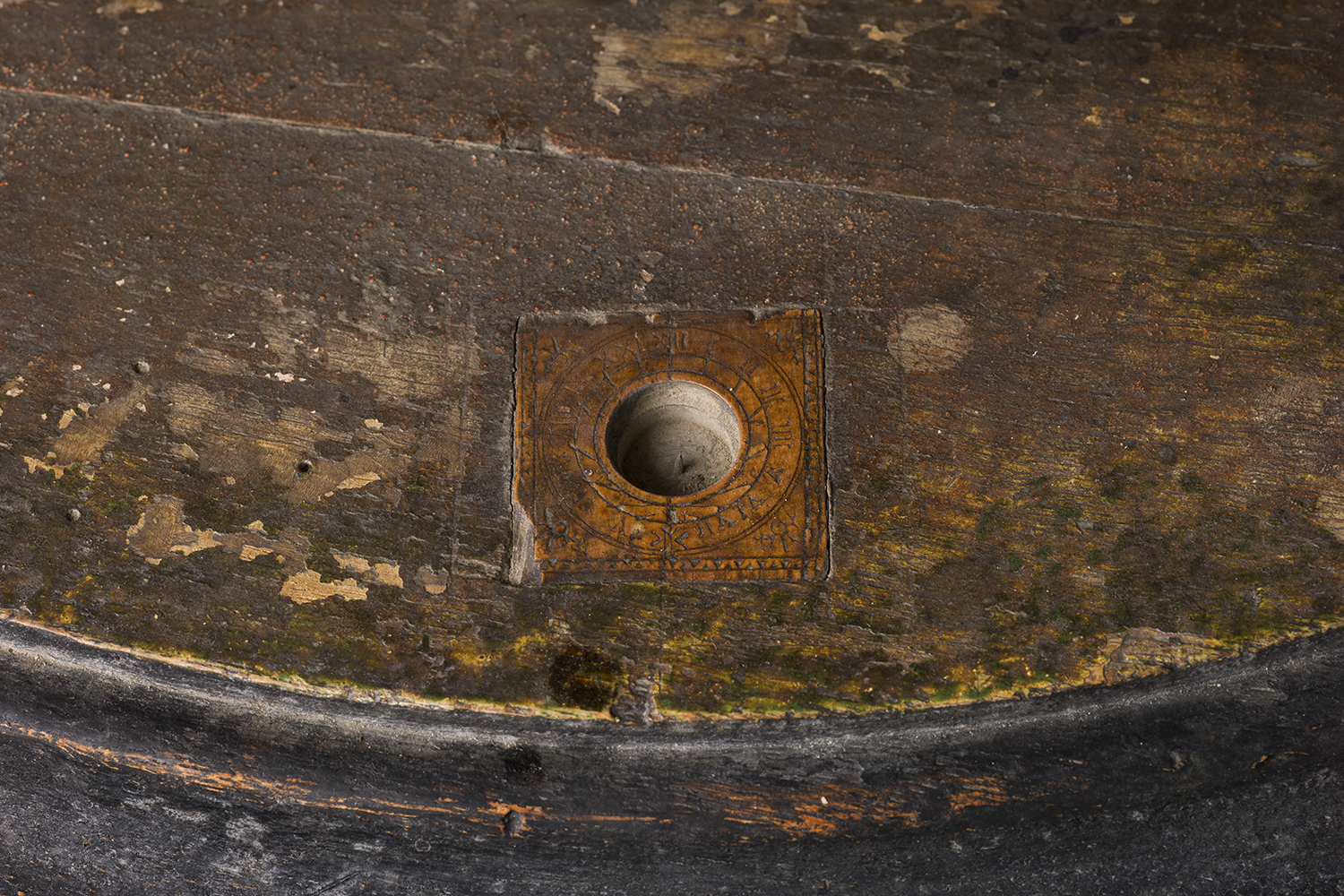Magnetised needle
Two magnetised needles were encased in the stands at the time the terrestrial and celestial globes were produced, but they have since been lost. They were intended to help determine longitude, using the globe and the needle’s declination in relation to the north. This procedure was apparently already known to Sébastien Cabot three decades earlier.
While the first compasses were invented in China around 1040, they were not imported into Europe until about the 12th century. At the time it was believed that the magnetised needle pointed towards the North Star, an idea that was challenged from the 13th century. In 1546 Gerardus Mercator demonstrated from measurements of declination that the place the magnetised needle pointed to could not be in the sky and had to be on Earth.
In 1600 William Gilbert proved that “Magnus magnes ipse est globus terrestris”, meaning the Earth itself is a great magnet. This was the first property generally attributed to our planet, 87 years before Isaac Newton explained gravity.

